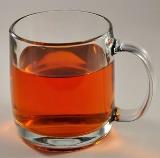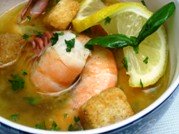|
Scottish farmers respect the salmon life cycle and duplicate it where possible for our UK-4 organic farmed raised salmon.
GeneticsStrains - The salmon life cycle begins with strains, groups of Atlantic salmon having distinctive characteristics and selected from rivers along the entire Scottish coast, was the breeding material that started the local industry some 50 years ago. Ova (eggs) and milt (sperm) were collected and became the breeding base. Decades of trial and error, painstakingly slow and frustrating hand labor and analysis, as mother nature is at best unpredictable, resulted in salmon strains showing the most attractive characteristics of rapid growth rate, color, fat content, and shape. We do not use genetically modified fish as we believe this hurts the salmon life cycle .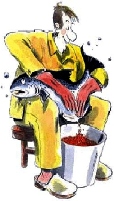
Stripping - Brood (breeding) stock is hand stripped for ova and milt. The fertilized eggs are laid in fresh water hatching trays and hatch after 60 days exposed to a temperature of 8 °C, 47 °F. Salmon are anadromous, meaning the young live in fresh water and the adults live in salt water. Fertilization equals ova plus milt plus fresh water. The fertilized eggs hatch after 2 months. 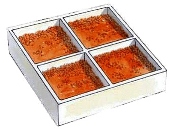
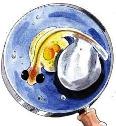
Hatching -
At hatching the eggshell bursts and the larvae (alevin) emerge with a yolk sack, containing nutrients for the first few weeks of life. During the time when the larva is using the yolk sack, it hides in gravel and does not move. Before the yolk sack is empty, the farmer starts converting the larva to natural feed. This phase is called “start feeding period” and is critical to salmon health.
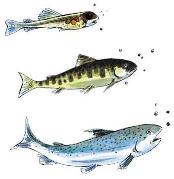
Fry in fresh water
FeedUK Certified Organic Salmon Food - Feed is crucial in maintaining an optimum salmon life cycle. As adult carnivores, salmon eat shrimp, krill, eel, and pelagic fish such as herring, mackerel, sardines and smelts. UK certified salmon food duplicates these nutritional values of wild seafood with recycled, non-salmonoid, fish protein for human consumption which includes head, tails and trimmings. Fish oil content cannot exceed 26% and the vegetable binder is not corn and must be certified organic. The feed contains (List Ingredients Link) no antibiotics, no hormones, no coloring, no Genetically Modified Organisms (GMO) as protein or vegetable binder.This has the direct ecological benefits including:
FarmingLocation - The north shore of the Scottish Shetland Islands is considered one of the most remote salmon farm sites in the world, lying within the most pristine of waters washing Shetland's magnificent and rugged coastline, windswept and storm tossed for much of the year. Situated at the junction of the North Atlantic Ocean and the North Sea, strong predictable currents create ideal conditions for rearing fish that are physically strong and firm. These currents constantly flush and dilute fish waste and uneaten food. Additionally, the farms are located in deep water further diluting waste and food to similar waste levels of wild salmon schools minimizing risk to the salmon life cycle.Aquaculture Management - The density of growing salmon does not exceed 10kg (22lbs) per cubic meter of water. This is half the typical stocking densities of traditional farms. At lower densities, the fish display less stressful behaviors resulting in greater overall health. Moving farms to deeper water greatly increases dilution factors. This is critical as organic farming strives to eliminate therapeutic agents. The improvements in feed management and in systems - using control loops with, for example, underwater TV cameras and Doppler systems - have significantly reduced the amount of feed that remains uneaten. In general, the more farms duplicate the salmon life cycle of wild salmon, the more the environment and the consumer benefit. Salmon health improves. ProcessingHarvesting - Methods of harvesting vary but fish are generally kept off feed 3 days before slaughter to clean out the digestive tract minimizing contamination and preserving salmon health.In Scotland, most fish are initially stunned using an automated stunner to the head. Bleeding is then carried out by cutting the gill arches rapidly and the fish are immersed in iced water. Waste disposal of blood is strictly controlled in order to prevent disease transmission. The fish are then gutted, washed and chilled. Once the flesh temperature reaches approximately 3 °C (37°F), the fish are graded and packed on ice. At this stage, whole fish can be frozen for sale as whole frozen salmon or as fresh gutted salmon. However, most fish are filleted and either sold as fresh salmon fillets or set aside for smoking. Eagle Wood Farms receives the fresh salmon into New Bedford Massachusetts USA and has it frozen and processed into 4 and 8 ounce cryovaced portions at a USDA/FDA approved facility. We hope you enjoy what many consider the finest tasting North Atlantic Salmon in the world.
|


